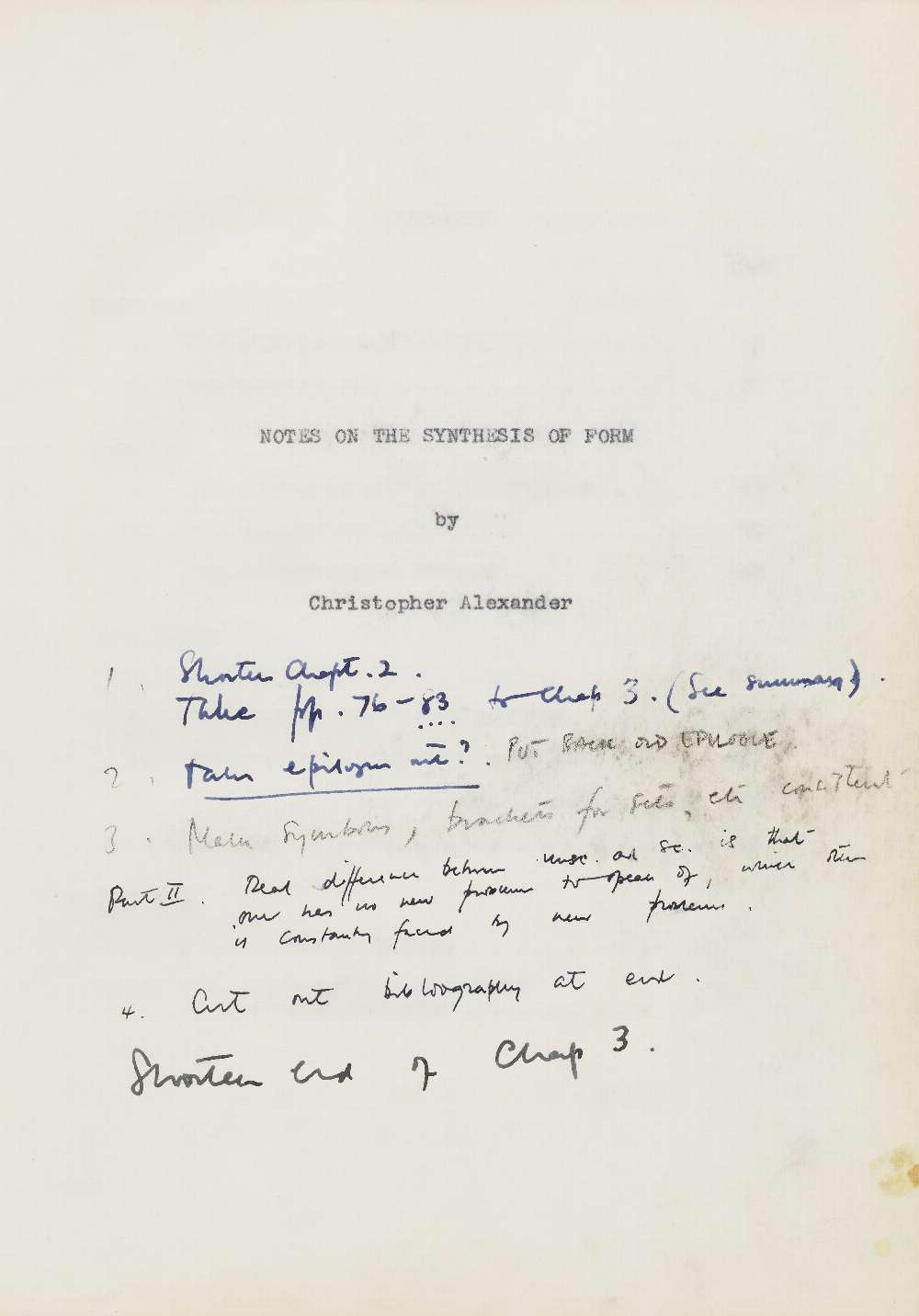
Notes on the Synthesis of Form: Author’s copy
01/01/1962238-page hardbound copy, a typewritten early version with paste-up graphs and heavy text editing by the author. It consists of: 1) Part One: The Need for Rationality, 2) Part Two – 4 Chapters: Goodness of Fit, The Source of Good Fit, The Unselfconscious Process, The Self-conscious Process, 3) Part Three – 5 Chapters: The Program, The Realization of the Program, Definitions, Solution, Epilogue, 4) Part Four – 2 Appendixes. Appendix I: “The Determination of Components for an Indian Village”, presented at the Conference on Design Method, Imperial College, London, September 1962. Appendix II: 34 pages with purely mathematical problems and graphs illustrating his theory.
References
-
Good Fit between Form & Context
Christopher Alexander states in the "Notes on the Synthesis of Form" that the object of design is form, and consequently the problem of design is to fit the form with its context. Form is the part of the world which ...
-
Decomposition Process and the Diagrams
The prevailing idea being the search for goodness of fit between form and its context, Alexander postulated that in today's selfconscious design process, in order to attain a good design there must be an underlying correspondence between the structure of ...
-
Notes on the Synthesis of Form: Photographs of book artwork Artwork
01/01/1962
Photograph included the 1962 book manuscript; it illustrates the composite diagram “Entire Village”, composed of the diagramatic entities A, B, C and D.
-
Notes on the Synthesis of Form: Photographs of book artwork Artwork
01/01/1962
Photograph included the 1962 book manuscript; it illustrates diagram A, the village entity which deals with cattle, carts and fuel, accompanied with the predominant form of A1, the central control point for the cattle, as well as of A2 and ...
-
Notes on the Synthesis of Form: Photographs of book artwork Artwork
01/01/1962
Photograph included the 1962 book manuscript; it illustrates diagram B, the largest village entity, which deals with agricultural production, irrigation, and distribution; the predominant form is B4 the water collection unit, accompanied with diagrams B1, B2 and B3.
SEE ALL Photographs




 Go Back
Go Back